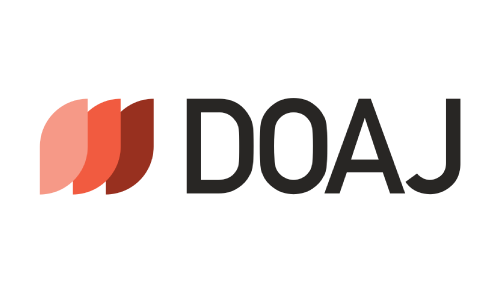An Investigation into the Current Situation of Implementing Building Information Modeling (BIM) in Construction Projects in Erbil City, KRG, Iraq
DOI:
https://doi.org/10.21271/ZJPAS.32.3.2Keywords:
Building Information Modeling(BIM); Barriers; Motivation; Construction ProjectsAbstract
Building Information Modeling (BIM) facilitates sharing all participants during the project’s lifecycle management by providing shared digital resources for all stakeholders. This study carried out during 2018-2019 as an attempt to understand the current situation and to identify the potential barriers factors facing the BIM implementation in Erbil city, Kurdistan Regional Governorate (KRG)-Iraq. The results analysis of collected data revealed that only 58% of respondents had heard about the BIM against 42% had never heard about BIM. While a majority of 79% said that they had not used BIM; against only 21% said BIM used by their companies. The results of the analysis city showed that the top five significant barriers and obstacles factors encounter the implementation of BIM was the lack of conducting training courses for learning BIM techniques in Erbil city comes in the first rank. Whereas poor education syllabus and training courses in universities and governmental centers in the second rank. While, the Lack of supportive environment by the parties involved in construction and have an impact on the development of construction projects came in the third rank, and poor planning and a coordination with considerations for proper implementation and innovation management in the fourth rank, the lack of experts and technical staff in the field of BIM came in fifth ranks. The primary contribution of this study is to enhance awareness of the benefits of adopting BIM in the construction sector in Erbil city.
References
ABDUL FATTAH, N. M., KHALAFALLAH, A. M. & KARTAM, N. A., 2017. Lack of BIM training: investigating practical solutions for the State of Kuwait. World Academy of Science, Engineering and Technology, International Journal of Civil, Environmental, Structural, Construction and Architectural Engineering, 11, 1050-1056.
ABUBAKAR, M., IBRAHIM, Y., KADO, D. & BALA, K. 2014. Contractors' perception of the factors affecting Building Information Modelling (BIM) adoption in the Nigerian Construction Industry. Computing in civil and building engineering (2014).
AHMED, S. M., EMAM, H. H. & FARRELL, P. Barriers to BIM/4D implementation in Qatar. The 1st international conference of cib middle east & north Africa conference, 2014. 533-547.
AMERICA, A. G. C. O. 2005. The Contractor’s Guide to BIM, Las Vegas, NV AGC Research Foundation.
AUTODESK. 2014. The Value of BIM for Owners: Save Time and Money During the Building Lifecycle [Online]. Available: http://damassets.autodesk.net/content/dam/autodesk/www/solutions/bim/BIM_for_Owners.pdf. [Accessed 23-Dec 2018].
AZHAR, S. 2011. Building information modeling (BIM): Trends, benefits, risks, and challenges for the AEC industry. Leadership and management in engineering, 11, 241-252.
AZHAR, S., NADEEM, A., MOK, J. Y. & LEUNG, B. H. Building Information Modeling (BIM): A new paradigm for visual interactive modeling and simulation for construction projects. Proc., First International Conference on Construction in Developing Countries, 2008. 435-46.
BECERIK-GERBER, B. & KENT, D. 2010. Implementation of integrated project delivery and building information modeling on a small commercial project.
CONSTRUCTION, M.-H. 2012. The business value of BIM in North America: multi-year trend analysis and user ratings (2007-2012). Smart Market Report.
EASTMAN, C., TEICHOLZ, P., SACKS, R. & LISTON, K. 2011. BIM handbook: A guide to building information modeling for owners, managers, designers, engineers and contractors, John Wiley & Sons.
EGYPTIAN, R. 2017. Application of BIM in the Middle East [Online]. Available: https://www.egyres.com/articles/[Accessed 20-Dec 2018].
HARDIN, B. 2009. BIM and Construction Management: proven Tools, Methods, and Workflows‖ Wiley Publishing Inc. Indianapolis, Indiana.
HEROLD, D. M., FEDOR, D. B., CALDWELL, S. & LIU, Y. 2008. The effects of transformational and change leadership on employees' commitment to a change: A multilevel study. Journal of applied psychology, 93, 346.
HINTON, P., BROWNLOW, C., MCMURRAY, I. & COZENS, B. 2004. Using SPSS to analyze questionnaires: Reliability. SPSS explained, 356-366.
HOSSEINI, M. R., AZARI, E., TIVENDALE, L. & CHILESHE, N. Barriers to adoption of building information modeling (BIM) in Iran: Preliminary results. The 6th International Conference on Engineering, Project, and Production Management (EPPM2015), Gold Coast, Australia, 2015.
KJARTANSDÓTTIR, I. B., MORDUE, S., NOWAK, P., PHILP, D. & SNÆBJÖRNSSON, J. T. 2017. Building Information Modelling-BIM, Civil Engineering Faculty of Warsaw University of Technology Warsaw.
KRAUTH, J. 2000. Experimental design: a handbook and dictionary for medical and behavioral research, Elsevier.
KUSHWAHA, V. 2016. Contribution of building information modeling (BIM) to solve problems in architecture, engineering and construction (AEC) industry and addressing barriers to implementation of BIM. Int. Res. J. Eng. Technol, 3, 100-105.
LAHDOU, R. & ZETTERMAN, D., 2011. BIM for Project Managers How project managers can utilize BIM in construction projects.
LIKERT, R., 1932. A technique for the measurement of attitudes. Archives of psychology.
MATARNEH, R. & HAMED, S., 2017. Barriers to the adoption of building information modeling in the Jordanian building industry. Open Journal of Civil Engineering, 7, 325.
NBS 2015. NBS International BIM Report, UK.
YOCKEY, R. D. 2018. SPSS Demystified: A simple guide and reference, Routledge.
ZAHRIZAN, Z., Ali, N. M., HARON, A. T., MARSHALL-PONTING, A. & HAMID, Z. A. 2014. Exploring the barriers and driving factors in implementing building information modeling (BIM) in the Malaysian construction industry: A preliminary study. Journal of the Institution of Engineers, Malaysia, 75, 1-10.
Downloads
Published
How to Cite
Issue
Section
License
Copyright (c) 2020 Khalil Ismail Wali

This work is licensed under a Creative Commons Attribution 4.0 International License.














